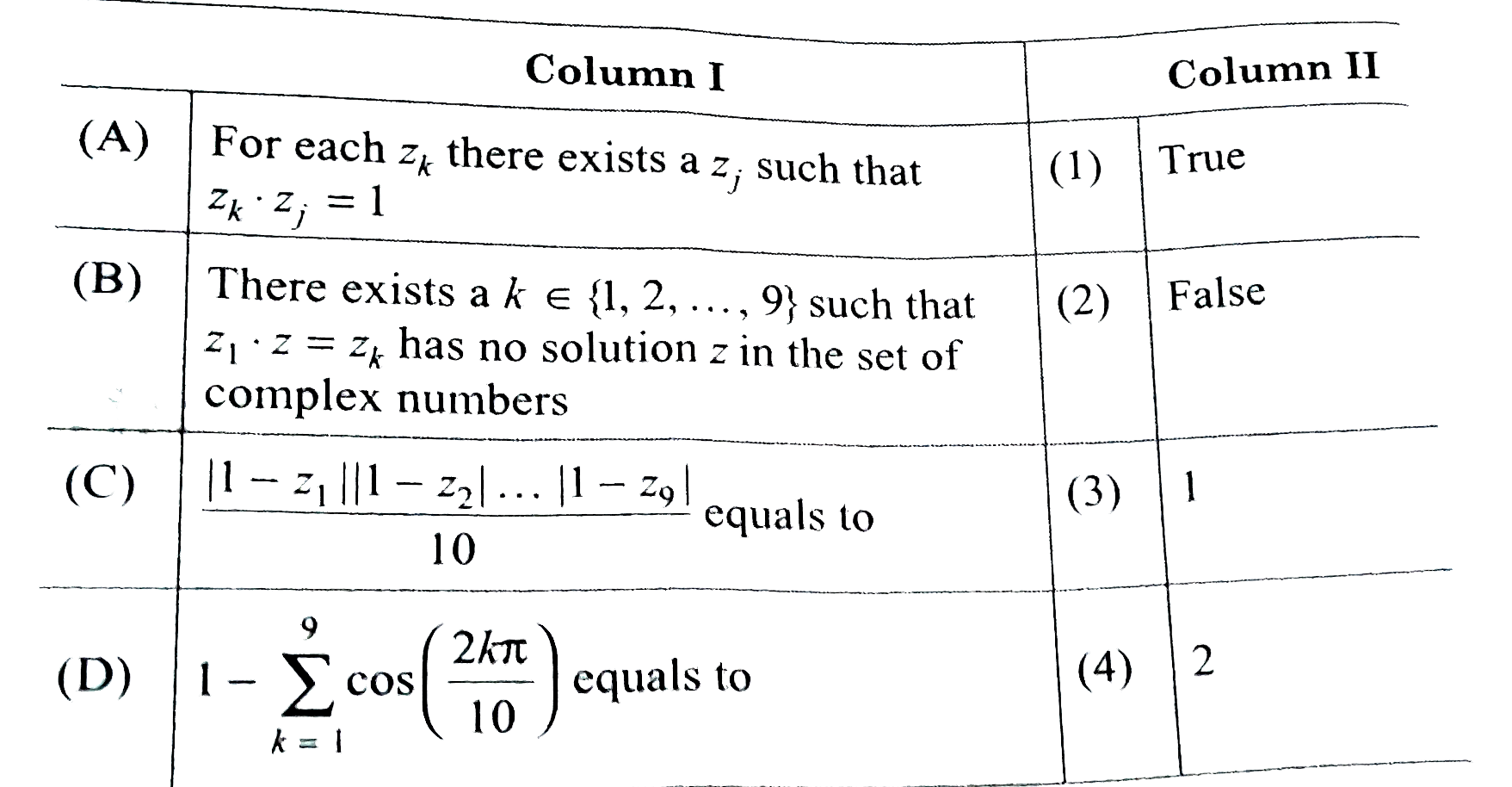2002+(2k−1)∑r=1cos(2rπ7)+isin(2rπ7)=0 then the non negative integtral values of k less than 10 may be
The correct Answer is:4
To solve the problem, we need to evaluate the expression
2002+(2k−1)∑r=1(cos(2rπ7)+isin(2rπ7))=0
This can be rewritten using Euler's formula:
2002+(2k−1)∑r=1ei2rπ7=0
Step 1: Identify the sum as a geometric series
The expression can be recognized as a geometric series where the first term a=ei2π7 and the common ratio r=ei2π7. The number of terms n is 2002+(2k−1)=2001+2k.
The sum of a geometric series is given by:
Sn=a1−rn1−r
Substituting our values:
S=ei2π7⋅1−(ei2π7)2001+2k1−ei2π7
Step 2: Set the sum equal to zero
For the sum to equal zero, the numerator must be zero (since the denominator is non-zero):
1−(ei2π7)2001+2k=0
This implies:
(ei2π7)2001+2k=1
Step 3: Analyze the condition for equality to 1
The expression ei2π7 raised to any integer multiple of 7 will equal 1. Therefore, we need:
\frac{2001 + 2k}{7} = n \quad \text{(where n is an integer)}
This implies that:
2001+2k=7n
Step 4: Rearranging the equation
Rearranging gives us:
2k=7n−2001
k=7n−20012
Step 5: Finding integer values for k
For k to be a non-negative integer, 7n−2001 must be non-negative and even. Therefore:
1. 7n≥2001
2. 7n must be even.
Since 2001 is odd, 7n must also be odd. This means n must be odd. Let n=2m+1 (where m is a non-negative integer):
Substituting gives:
7(2m+1)−2001=14m+7−2001=14m−1994
Thus:
k=14m−19942=7m−997
Step 6: Finding values of k
To ensure k is non-negative:
7m−997≥0⟹7m≥997⟹m≥9977≈142.43
Thus, m must be at least 143.
Step 7: Finding the upper limit for k
Since k<10:
7m−997<10⟹7m<1007⟹m<10077≈143.86
Thus, m can only take the value 143.
Step 8: Calculate k
Substituting m=143:
k=7(143)−997=1001−997=4
Conclusion
The only non-negative integral value of k less than 10 is:
4
\frac{2001 + 2k}{7} = n \quad \text{(where n is an integer)}
2. 7n must be even.
Topper's Solved these Questions
- COMPLEX NUMBERS AND QUADRATIC EQUATIONSBOOK - AAKASH INSTITUTE ENGLISHCHAPTER - COMPLEX NUMBERS AND QUADRATIC EQUATIONSEXERCISE - section-H ( Multiple True-False Type Questions
5 Videos
- COMPLEX NUMBERS AND QUADRATIC EQUATIONSBOOK - AAKASH INSTITUTE ENGLISHCHAPTER - COMPLEX NUMBERS AND QUADRATIC EQUATIONSEXERCISE - section-I (Subjective Type Questions)
16 Videos
- COMPLEX NUMBERS AND QUADRATIC EQUATIONSBOOK - AAKASH INSTITUTE ENGLISHCHAPTER - COMPLEX NUMBERS AND QUADRATIC EQUATIONSEXERCISE - Section-F ( Matrix -Match type Question)
7 Videos
- BINOMIAL THEOREMBOOK - AAKASH INSTITUTE ENGLISHCHAPTER - BINOMIAL THEOREMEXERCISE - Assignment (section-J) Objective type question (Aakash Challengers Questions)
4 Videos
- CONIC SECTIONSBOOK - AAKASH INSTITUTE ENGLISHCHAPTER - CONIC SECTIONSEXERCISE - SECTION - J ( Aakash Challengers Questions )
16 Videos
Similar Questions
Knowledge Check
5∑k=0(−1)k2k
A−10B−6C0D6
6∑k=1 (sin,2πk7−icos,2πk7)=?
View SolutionIf ⎡⎣cos 2π7−sin 2π7sin 2π7cos 2π7⎤⎦k=[1001], then the least positive integral value of k, is
View SolutionLet zk=cos(2kπ10)+isin(2kπ10),k=1,2,…,9. Then match the column

View Solution10∑r=1(r+{r7}+{2r7})= where {x}→ fractional part function
View SolutionIf A=3∑r=1cos2rπ7andB=3∑r=1cos2rπ7, then :
View Solution1−9∑k=1cos 2πk10 equals to…..
View SolutionIf 3−tan2π71−tan2π7=kcosπ7 then the value of k is
View Solution
